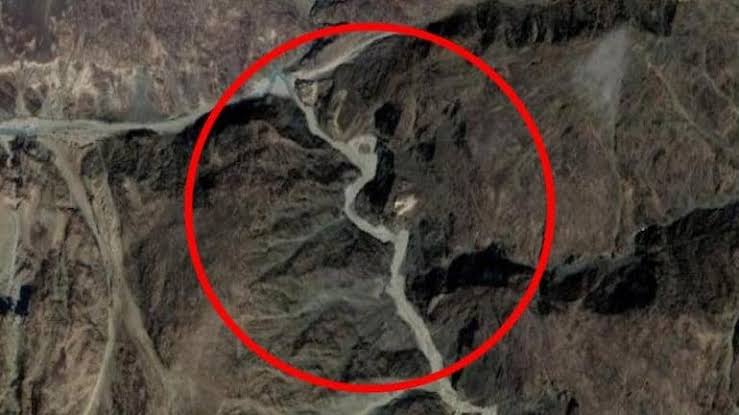China’s Galwan Saga : Facts Vs Fiction

After eight months of deafening silence, the Chinese authorities have disclosed identities of their four soldiers killed during the Galwan valley clash last year. However, China has ensured to package the information with a shrewdly curated battle story.
Published first on Friday by army-affiliated People’s Liberation Army Daily, the story tried to float a ‘David and Goliath’ like tale of bravery and courage on part of the PLA troops, oddly projecting the PLA as the weaker side on the day of the clashes.
The narration is a storybook tale of a small group of PLA troops who defeated the “foreign troops” despite being outnumbered.
But evidence available in the public domain, including commercial satellite imagery, suggests that this incredible Chinese saga is too good to be true.

PLA Daily article published on February 18, 2021
The story carried interviews, diary quotes and accounts of PLA officers and soldiers who participated in the June 15 clashes with the Indian Army.
A purported diary piece written by one of the soldiers who died in the clash has been quoted in the article to suggest that the Indian troops crossed the line and outnumbered the PLA in the Galwan river valley.
“In the face of the number of foreign troops far more than ours,” PLA soldier Chen Xiangrong has been quoted in the piece.
However, satellite imagery captured before and hours after the violent clashes suggest that Chinese troops were never outnumbered in the valley.
Imagery from June 9, 2020, of the river valley provides a bird’s eye view of the troop strength before the clashes.

On the contrary, Indian troops in the Galwan river valley were following the agreement reached during the meeting of Corps Commanders on June 06, 2020.
This was confirmed by the ministry of foreign affairs of China on June 10.
“China and India have recently had effective communication and reached agreement on properly handling the situation in the west section of the China-India boundary. At present, the two sides are taking actions in line with the agreement to ameliorate the border situation,” Hua Chunying, the spokesperson of MFA, told reporters five days before the clash.
Satellite imagery taken hours after the June 16 violent clashes confirm a disproportionately large PLA contingent against a thinly spread Indian deployment, which was actively playing its part in the disengagement process.

Surprisingly, the authors of the PLA daily article, as well as the soldiers’ diary, presumably written during the peak of the standoff, used the common phrase “foreign troops” for the Indian troops.
With this story, China recognised four of its causalities as the recipients of honorary titles and merit citations accorded by its Central Military Commission. However, it once again did not put out an explicit number on the total injuries.
Apart from a PLA officer Qi Fabao, a regimental commander with PLA Xinjiang Military Command, no other soldier or officer has been identified as injured survivor in the official Chinese account.
Chen Hongjun, Chen Xiangrong, Xiao Siyuan and Wang Zhuoran have been identified as posthumous recipients of the military honours.
Oddly, the full story was not published on the English version of the Chinese military page.
It later published a trimmed version of the story which was sourced from government news agency Xinhua.
The translated version of the original Chinese write-up published by PLA Daily is more than 3,800 words long, whereas, the shorter version of the story has just 125 words.
Another English language publication Global Times published an edited version of the story with excerpts from the original piece.
Packed with dramatic idioms and patriotic quotes attributed to the PLA soldiers and officers, the Chinese version of the Galwan story stresses heavily on the claim that the “foreign troops” crossed the line and the Chinese troops drove them out without losing any territory.
But satellite imagery captured days after the clashes show that the PLA came extremely close to the contested patrol point 14 but pulled back to its earlier position in the following weeks.
Earlier this week PLA troops pulled back from another contested region of Ladakh’s Pangong Tso area.
Source : India Today




